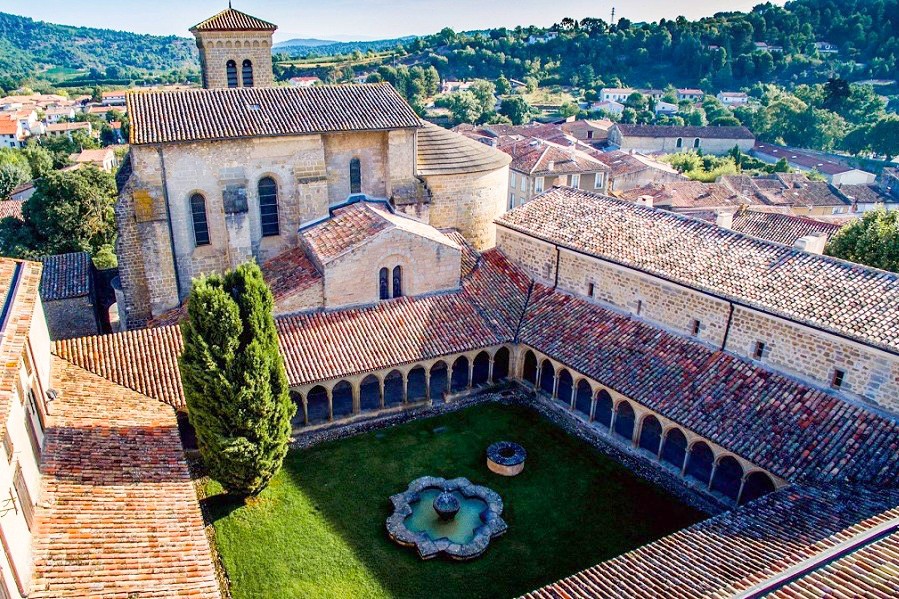- Luis Segundo Correas ‘El Cipres’ 2021 Malbec, Mendoza Argentina, $14
- Can Blau Red Blend, Monsant Spain, $19
- Aldinger 2022 “Feldhase” Trollinger, Germany $21
- J. Laurens Cremant de Limoux, France $19
- Delobel 2021 Touraine Sauvignon Blanc “Angl Droit”, France $18
- Chesebro 2022 Vermentino, Monterey CA, $20
1. Luis Segundo Correas ‘El Cipres’ 2021 Malbec, Mendoza Argentina, $14
The Wine
El Cipres represents what Argentine Malbec tasted like fifteen years ago before everyone started over-extracting and over-oaking it. From 80-year-old estate vines!! If the wine world was rational, this would be stacked and poured everywhere. Of course, it is far from rational, so we’re pleased to remain a missionary, singing the praises of this undiscovered gem.
An dense, ruby wine with aromas of dark fruits, sweet spices and black pepper. Hints of cedar, leather and graphite. The tannins are notable but pleasant, and are already integrating rapidly in the six months between my tastings. Pair it with grilled meats (Argentina is known for its beef, after all!), BBQ, lamb, hard cheeses and dark chocolate desserts.
At this price, how is it even be possible to deliver so much wine?
To say it punches above its weight class is an understatement.
Stupid good value.
The Winery
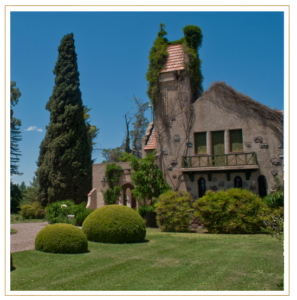 The Correas family began growing grapes in Mendoza in 1860 when Don Segundo Correas built the family’s first winery. By the 1930’s, the winery was led by Julian Correas, who gaine fame for producing some of Mendoza’s finest Cabernet Sauvignon. Luis Segundo Correas, the third generation of his family to craft Argentine wine, continues to build on this history at the humble winery space he built in the mid-1970’s.
The Correas family began growing grapes in Mendoza in 1860 when Don Segundo Correas built the family’s first winery. By the 1930’s, the winery was led by Julian Correas, who gaine fame for producing some of Mendoza’s finest Cabernet Sauvignon. Luis Segundo Correas, the third generation of his family to craft Argentine wine, continues to build on this history at the humble winery space he built in the mid-1970’s.
The family’s ‘El Cipres’ line of wines is named for the Cypress tree in front of the original family home (right), which now serves as their summer home. They are accustomed to moving between locations – their 350+ acres of vines are spread across 8 states in Argentina.
With that many grapes at their disposal, it’s no wonder all their wines come from their estate fruit.
Their “El Cipres” Malbec provides so much wine, it’s a no-brainer for your every-day red, and should even be allowed to elbow its way into your consideration set for special occasion and gift wines!
2. Cellars Can Blau 2019 Red Blend, Monsant DO, Spain (Organic) $19
The Wine
Perhaps you’re already well acquainted with “GSM” – the nickname for the wines of Southern France that are a blend of Grenache, Syrah and Mourvedre? Well it’s time to expand that friends group with a “GCS” wine, starting with this red blend of Garnacha (AKA Grenache), Cariñena (AKA Carignan) and Syrah.
OK, maybe the acronym is missing a bit of cachet, but trust me, the wine isn’t!
The varietal blend is only part of the story here, as the soils share equal billing. The Garnacha vines are planted on metamorphic rock soils known as llicorella – a schist ‘soil’ that is difficult for American’s to say. My best phonetic interpretation is LICK or ray yah, but there’s a y in front of the LICK, which makes me stumble everytime. I forgive you if you prefer to just live it out and start with the LICK.
Moving on – the Cariñena vines grow in clay soils (which are dead easy to pronounce!), and the Syrah grows in limestone soils. Each soil type lends a different level of complexity to a wine fermented in stainless steel tanks before being aged in new french oak barrels for 12 months – most uncommon in a wine under $25!
Tasting Notes – The wine begins with an inviting cherry color with purple highlights. Its aromatics include ripe fruit and spice notes, both high-toned red fruit/floral notes with dark fruit as well. This is a worthy example of wines from the D.O. Montsant. Fruity, powerful, meaty (beef jerky?) and concentrated. The wine provides comfort on a cold winter night, or a summer night at the beach!
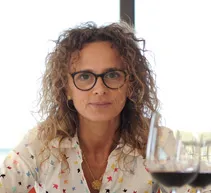
Winemaker Nuria Lopez Sarroca
Pair this wine with game meat and creamy rice dishes, paella, grilled or roasted poultry, pork, lamb or beef, braised vegetables, and hard cheeses or blue cheeses.
The Winery
Cellars Can Blau are part of the Gil Family wineries. One of Spain’s largest wine groups, my opinion of them and their winemaking practices has only grown with each of their wines I taste. They are located in the Montsant DO, which shares the same mountain as Priorat, surrounding that more prestigious region like a donut tossed onto the cone, with Priorat at the top.
Over the past decade, Montsant has really begun to show its stuff on the world stage, leveraging its soil diversity and homing in on the best grape varieties to grow in their unique terroirs. In general, these tend to be big, bold wines with a loud voice and something interesting to say.
Winemaker Nuria Lopez Sarroca (right) has been toiling at her craft since 1997, and prides herself on wines that reveal the characteristics of place, while leveraging contemporary equipment and techniques to bring that charcter to the fore.
3. Aldinger 2022 “Feldhase” Trollinger, Germany, $21
The Wine
From a 35 year-old plot in the Lämmler (a Grosse Lage), this is a mid-weight but strikingly saline and insistent wine that demonstrates the impact that Trollinger can make when deliberately constrained by low yields and the vinification is as serious as that accorded to Pinot Noir. For example, the vines were between 25 and 50 years old, the grapes were partially whole-cluster fermented, pump-over occured daily, and the fermented wine aged in used barriques for a full 12 months prior to release. Much like a pinot noir costing twice as much.
Tasting notes: Light and pinot-esque in style. Comparable to the Beaujolais-crus of Marcel Lapiere. Clear and elegant with a refreshing character.
A precious 250 cases produced. Very little imported.
The Winery
This wine finds its home in the German region of Württemberg. As a wine region, itis undeniably obscure outside of Germany. But it enjoys tremendous renown at home for its renditions of autochthonous grapes such as Trollinger, also known as “Schiava” in Northern Italy.
Württemberg is better known within automotive circles, as Germany’s automotive capital, Stuttgart, is located here. And this well-paid
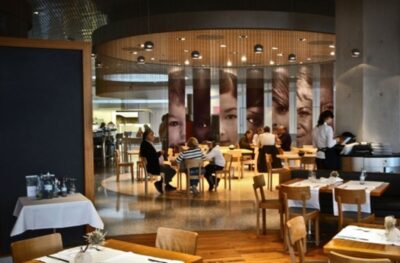
The restaurant at Mercedes Benz HQ where you’ll find Aldinger’s wines on the menu.
employee base seems to suck up the lion’s share of the region’s wines. So there is little motivation for the best producers to seek export markets.
This is the background against which we had the unbelievable good fortune to add this celebrated producer to our shelves. Aldinger is the first and only producer in Württemberg to be awarded “5 grapes” and 100-points by the celebrated Gault Millau guide. The Aldinger family has been in Fellbach since 1492, both as coopers and wine-growers.
The family set the foundation for what is today the region’s oldest winegrowing estate. Fast forward almost 500 years to 1955, when Gerhard Aldinger married Anneliese Aldinger (neé Pflüger) and decided to convert his father-in-law’s existing cooperage into a full-scale winery.
The 1973 they acquired the Untertürkheimer Gips vineyard, and in their capable hands the wines from this vineyard soon lent a new meaning to the word GIPS: distinctive, mineral-rich wines unlike any produced here before.
In 1992 – Building on 500 years of wine growing tradition, Gert Joachim Aldinger takes the helm. Dubbed the ‘King of the Kappelberg,’ Gert Joachim Aldinger’s decision to radically reduce yields flew in the face of conventional wisdom, breaking new ground in the region. Within 15 years, the estate was considered among Württemberg’s finest.
Today the winery is ably helmed by brothers Hansjörg and Matthias Aldinger, who have been propelled into the stratosphere of quality and acclaim. Their urban winery lies within spitting distance of the Mercedes Benz headquarters and Museum (whose exceptional restaurant, open to the public, naturally offers their wines). In short, what we have here is as good a wine producer as Germany offers.
This seamless transition from one generation to the next is a tremendous point of pride for both the family and the estate.
4. J. Laurens NV Cremant de Limoux, France $19
The Wine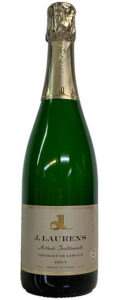
If you’ve been reading my posts since I began them in April, you’ve likely picked up that I’m a fan of good bubbles. And while that usually means the sparkling wine is from Champagne, I also get happy whenever a cork flies out of a bottle of Franciacorta, Cava, Trentodoc, or… Limoux?!
Wines from this region were originally called Blanquette de Limoux. This is a horse of a very different color. Blanquette uses different grapes (slightly sweeter) and a single fermentation in the bottle (like today’s Pet Nat wines) resulting in greater bottle variation and lower pressure, which leads to a shorter life span for the mousse.
Well, this ain’t that! Here’s what you can expect from this bottle of J. Laurens Cremant de Limoux: Aromas of Granny Smith apples carry over to a palate where tart red apples (Pink Lady?) join the parade where whisps of lemon curd bring up the rear. Bready yeast notes lead to a pleasant double-take – am I drinking Champagne here? Def not, but you’d be excused for thinking so, and for thinking the bottle cost 2X its modest tariff!
This is a wine to keep on hand. Stock up on a half case so you always have something to serve impromptu visitors!
The Winery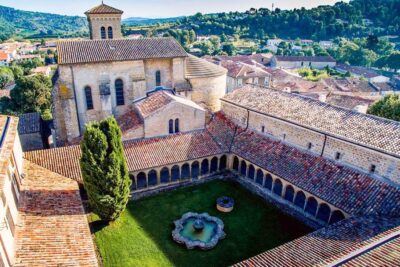
First, let’s clarify that a Cremant is simply a French sparkling wine that is NOT from the Champagne region (Cremant de Jura, de Limoux, de Bourgogne…).
It uses different grapes than Champagne, but that’s about it – the blending of still wines, the secondary fermentation in the bottle, the aging (slightly less is required, 12 months for non vintage vs Champagne’s 15)… it’s all in here.
But Limoux has some cool history that even Champagne can’t claim – it just may be the origin of sparkling wine production. Limoux is home to an Benedictine abbey called Saint-Hillaire, which historians credit with the discovery of sparkling wine in 1531, about 150 years before it was commonly produced in Champagne!
Whaaaa??? Why? How? It was Limoux’ proximity to the cork forests of Catalunya and the stronger glass from England that made their sparkling wine production possible. Cork, it turns out, is adept at maintaining the bottle pressure required to keep a sparkling wine’s effervescence.
For most of Limoux’ history, their sparkling wines were made from the obscure red grape called Mauzac and known as “Blanquette de Limoux”. But in 1990 the AOC Cremant de Limoux was created, and these wines lead with Chardonnay and Chenin Blanc, relegating Mauzac and sometimes even Pinot Noir to supporting roles.
5. Delobel 2021 Touraine Sauvignon Blanc “Angl Droit”, France (Organic/biodynamic) $18
The Wine
Angl Droit. Right Angle. What does this have to do with wine? I’ve no idea, and the winery’s website is all in French, so if it’s explained there, my translator didn’t pick up on it! I suspect it depicts the intent of this husband-wife team, tiny producers opting for an approach to winemaking that is at odds – ar a right angle – to conventional production methods. Deploying organic and biodynamic practices in their estate vineyard, Benjamin et Sandrine Delobel are producing exceptional wines of great value!
Sauvignon blanc is a grape that reflects terroir like few others. Grown in a cool region like New Zealand, it produces crisp white wines dominated by citrus (grapefruit, kiwi) and grassiness (hay, basil, fresh-mown lawn).
Plop that same vine in (much!) warmer Napa Valley and the wine becomes entirely different – a familial resemblence can be noted by the careful taster, but the differences are vast. These wines are more likely to be oaked, a winemaking decision made to emphasize the naturally rounder and richer with more subtle varietal character and riper fruit notes (melon, peach, lychee…)
Right in the middle of these two extremes are the Sauvignon Blancs of Touraine and the greater Loire valley, often seen as the highest expression of the variety. Look for mouth-watering acidity complimented by a stony minerality that begs to be paired with lighter dishes such as seafood, salads, and (especially!) goat cheese.
The Winery
Touraine is one of the better-known regions of the Loire Valley, which runs 600 miles from its origin in the hills west of sourthern Burgundy, out to the Atlantic ocean on the western side of France. But there are many sub-regions in Touraine (Vouvray, Montlouis-sur-Loire, Chinon…) each with their own reputation for unique terroirs and wine styles.
Though it can be argued that Chenin Blanc is the white grape royalty in Touraine, if that’s true than Sauvignon Blanc is in a photo finish for second place.
The winery is the dream of a young couple, Benjamin and Sandrine Delobel, who started their eponymous winery just a short few years ago. This is a relatively young winery, even by new world standards, but it stand tall amidst the towering edifices that are Loire’s old guard, who look on with no small amount of envy, I would guess, as Delobel racks up awrds on a regular basis.
We are thrilled to encourage the Delobels in our own small way, by selecting their wine for this month’s wine club members!
6. Chesebro 2022 Vermentino, Cedar Lane Vyrd, Monterey CA, $20
The Wine
The Winery
Become a member of the “Cheap and Cheerful” Selections Wine Club!


